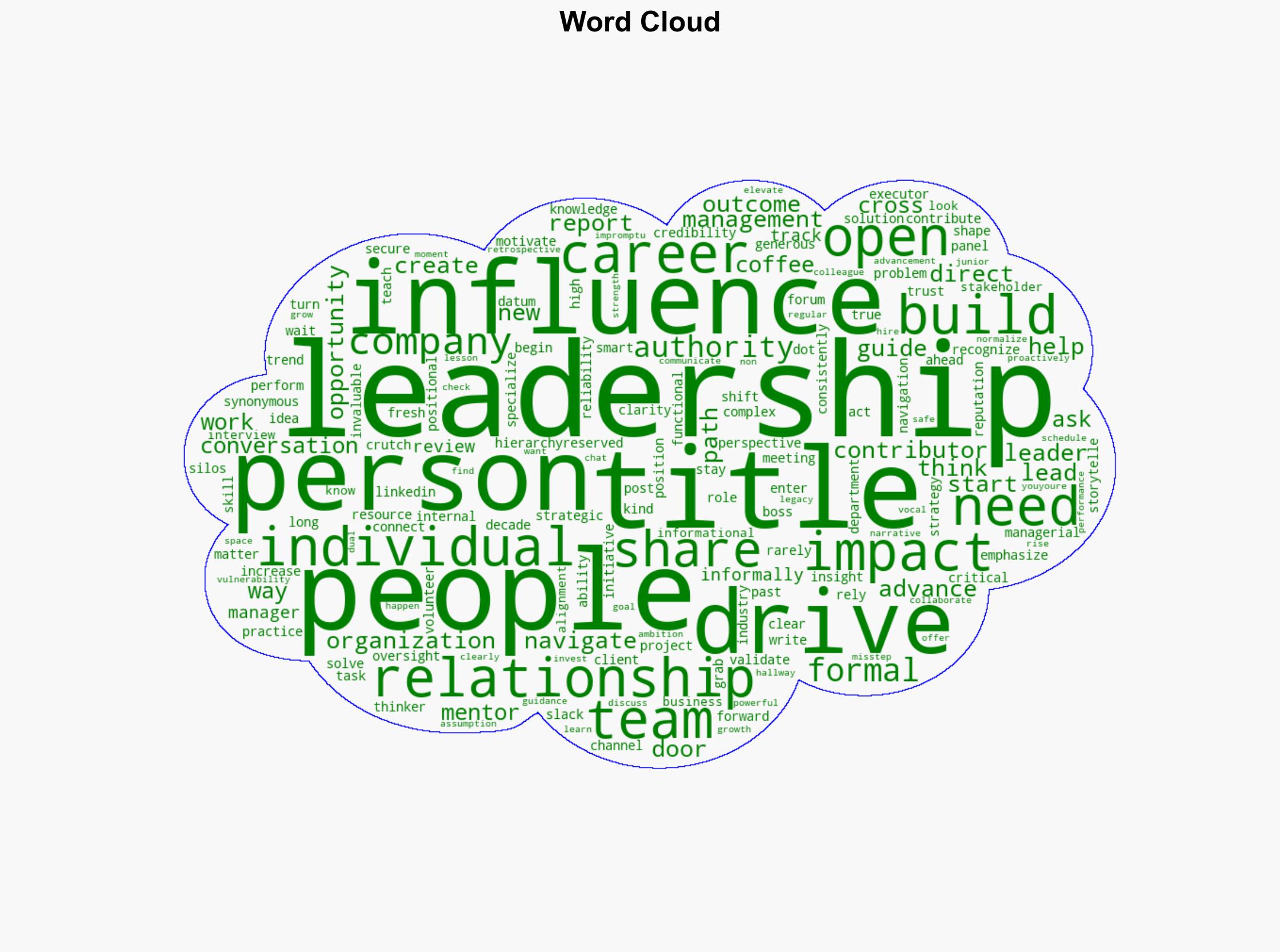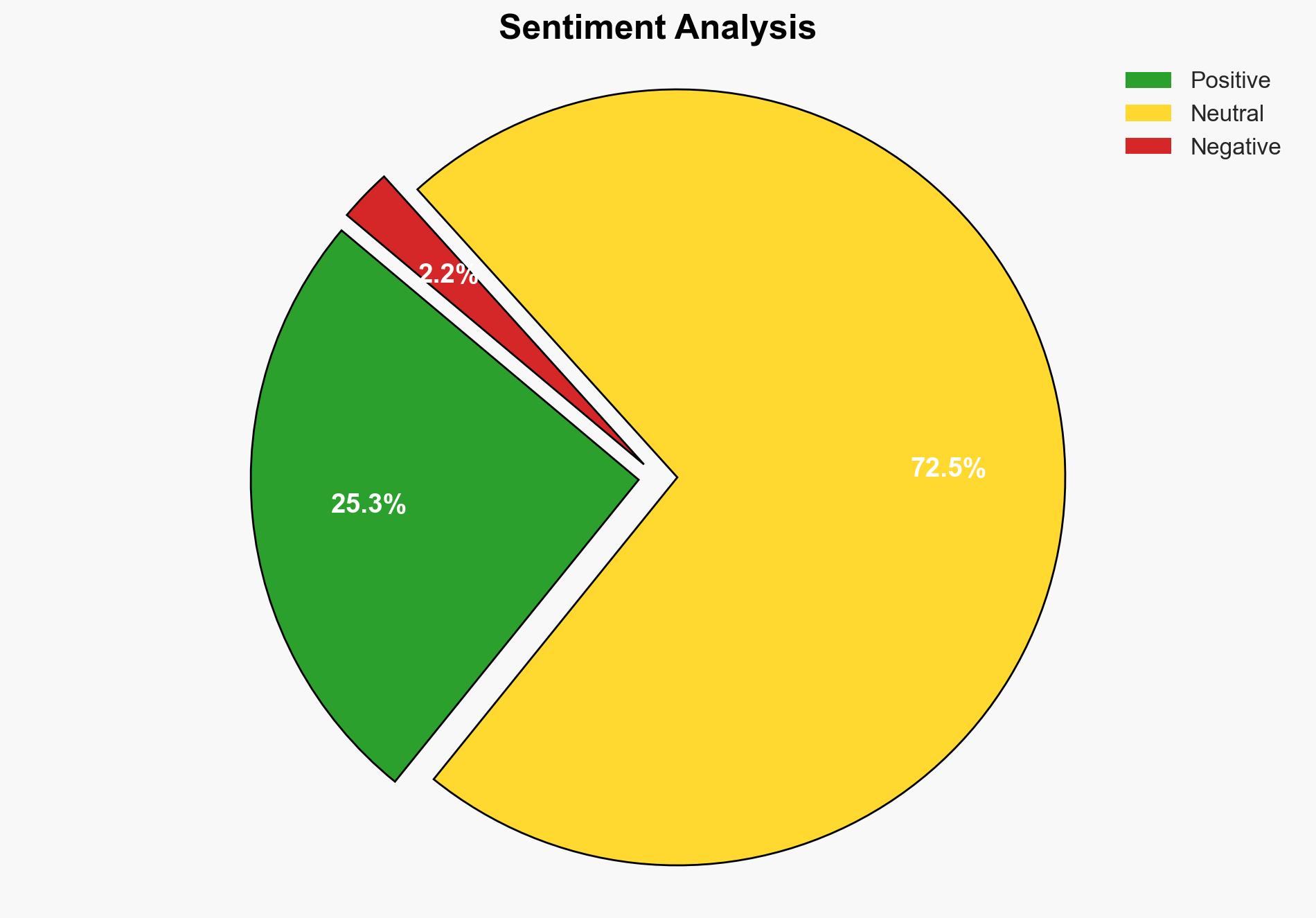You Dont Need To Be A Manager To Be A Leader Use This Career Strategy – Forbes
Published on: 2025-03-30
Intelligence Report: You Dont Need To Be A Manager To Be A Leader Use This Career Strategy – Forbes
1. BLUF (Bottom Line Up Front)
The article from Forbes emphasizes that leadership is not confined to formal managerial roles. It highlights the increasing recognition within organizations that leadership can be demonstrated through influence, strategic thinking, and relationship-building, irrespective of one’s position in the hierarchy. The key takeaway is that individuals can drive outcomes and lead effectively without holding a managerial title by leveraging their skills, knowledge, and networks.
2. Detailed Analysis
The following structured analytic techniques have been applied for this analysis:
General Analysis
The article underscores a shift in organizational culture where leadership is decoupled from hierarchical positions. This paradigm shift allows individuals to contribute strategically by influencing decisions, securing resources, and navigating complex relationships. The emphasis is on the value of individual contributors who can lead initiatives, mentor peers, and build cross-functional relationships. This approach fosters a culture of innovation and agility, essential for modern organizational success.
3. Implications and Strategic Risks
The trend towards recognizing non-managerial leadership could lead to more dynamic and responsive organizations. However, it also poses risks such as potential conflicts in authority, dilution of accountability, and challenges in performance evaluation. This shift might impact traditional management structures, requiring adjustments in leadership development programs and performance metrics. Failure to adapt could hinder organizational effectiveness and employee engagement.
4. Recommendations and Outlook
Recommendations:
- Organizations should develop frameworks to recognize and reward leadership qualities in non-managerial roles.
- Implement training programs that focus on strategic thinking, influence, and relationship-building skills.
- Encourage cross-functional collaboration and informal mentorship opportunities to foster a culture of shared leadership.
Outlook:
In the best-case scenario, organizations that embrace this leadership model could see increased innovation and employee satisfaction. The worst-case scenario involves resistance to change, leading to internal conflicts and reduced productivity. The most likely outcome is a gradual integration of these practices, resulting in a more adaptable and resilient organizational structure.
5. Key Individuals and Entities
The report does not mention specific individuals or organizations by name. However, it emphasizes the importance of recognizing leadership potential across all levels of an organization, highlighting the role of individual contributors in driving strategic outcomes.





